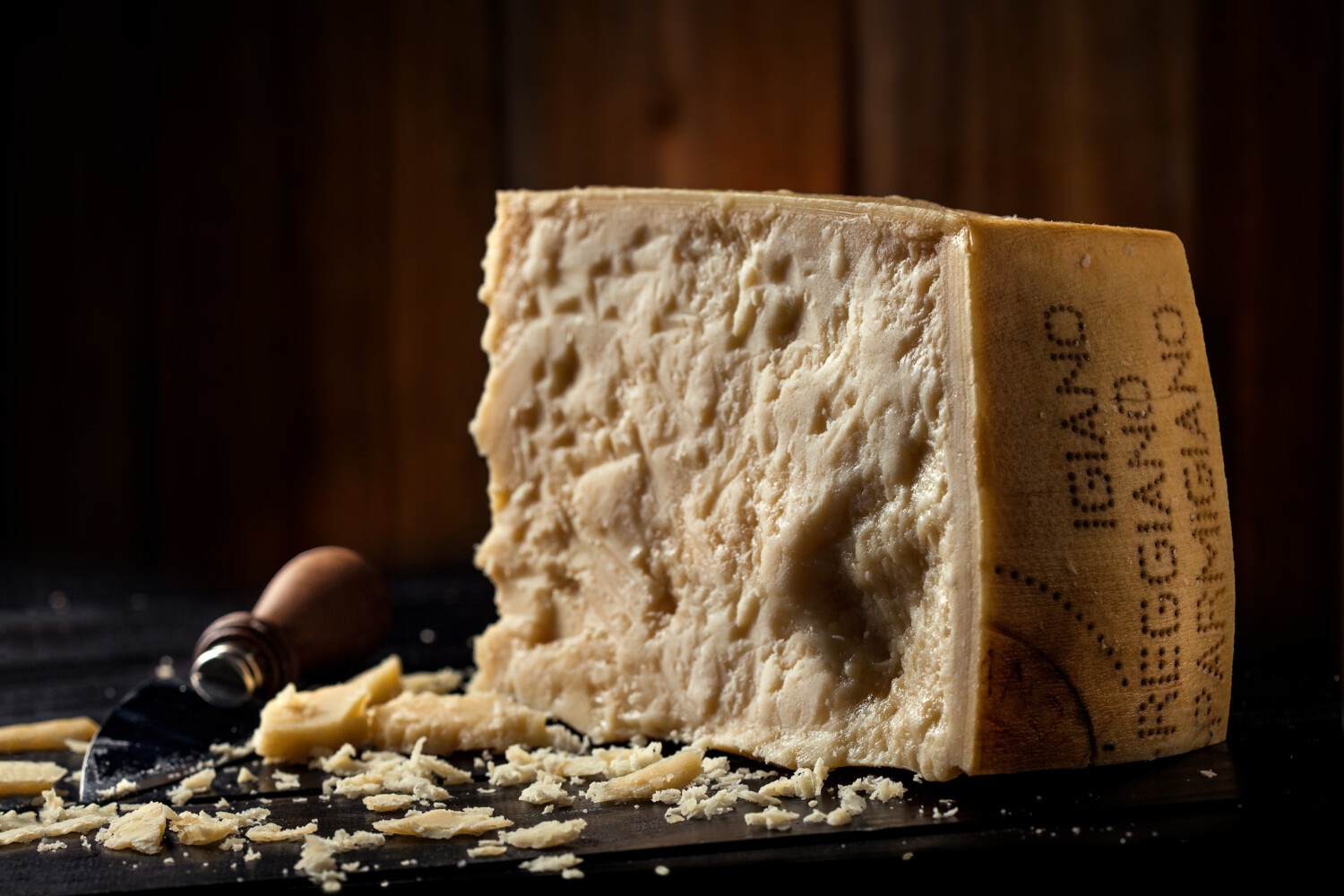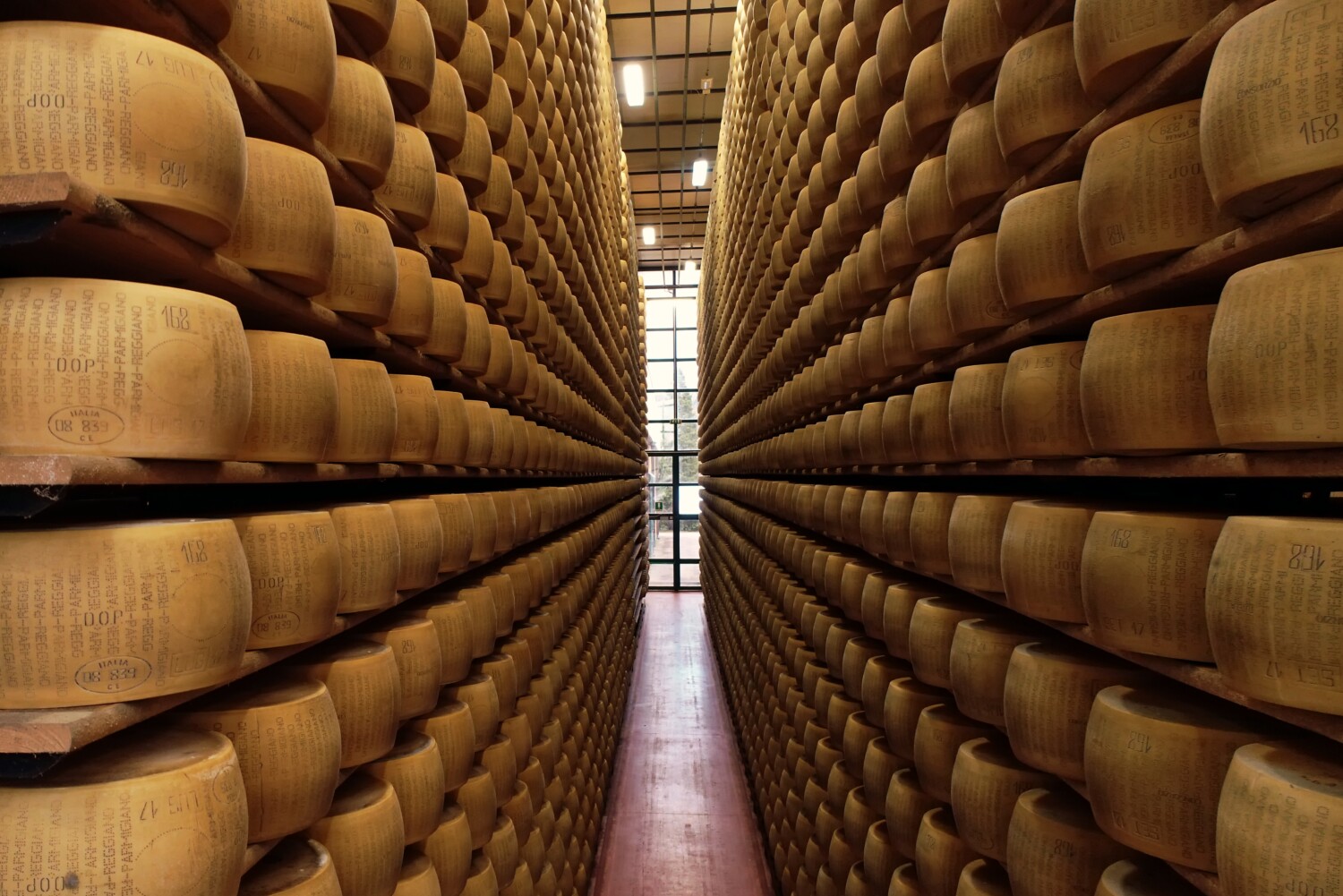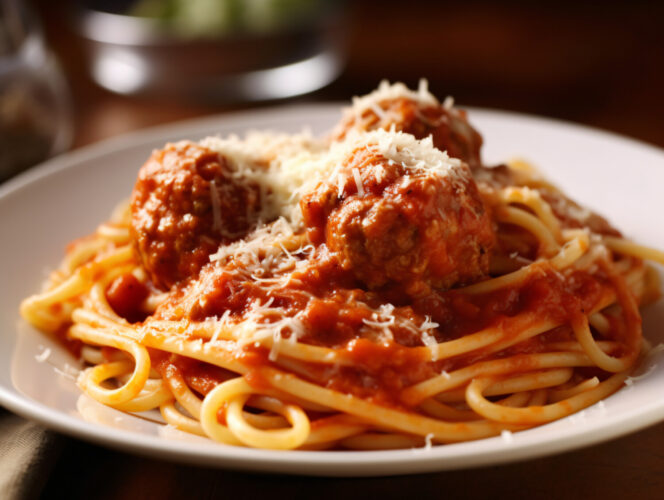The products and services mentioned below were selected independent of sales and advertising. However, Simplemost may receive a small commission from the purchase of any products or services through an affiliate link to the retailer's website.
You’re making a new pasta recipe and it calls for Parmigiano-Reggiano. Can you just use the Parmesan you’ve got on hand and call it a day or should you head to a cheese shop and forage for the more authentic fromage?
While similar, Parmigiano-Reggiano and Parmesan are hardly synonymous, explain cheese experts. Here’s what to know about the difference between the aged cheeses that are both made with cow’s milk.
Parmigiano-Reggiano Is Highly Regulated
The major differentiator that sets the two cheeses apart is the fact that Parmigiano-Reggiano is a Protected Designation of Origin (or PDO) cheese, explains Abbey Woodcock, the owner and cheesemonger of Callee1945, a cheese and specialty food shop in upstate New York.
The European Union regulation requires that foods and wines with the PDO marker “have the strongest links to the place in which they are made.” In the case of Parmigiano-Reggiano, it must be made in Italy, specifically in the “provinces of Parma, Reggio Emilia, Modena, Bologna to the left of the Reno River and Mantua to the right of the Po River,” according to the Parmigiano-Reggiano Consortium. At farms in the region, cattle are fed on a strict diet that includes local forage.

MORE: How to store cheese the right way
The cheese has to be aged for at least 12 months, Woodcock says, and Parmigiano-Reggiano wheels are aged at least 18 months for export. But most Parmigiano-Reggiano cheeses that you’ll find in shops have been aged longer, in the two- to three-year range.
One more major criterion is that Parmigiano-Reggiano can only contain three ingredients: milk, sea salt and rennet (which is an enzyme), points out Jenn Nicken, the founder of the virtual culinary school The Chef & The Dish.
This is not true of Parmesan cheese, which some consider an imitator of Parmigiano-Reggiano since it doesn’t adhere to the strict quality measures. The U.S. Code of Regulations says anything called Parmesan must only contain 32% milkfat and be aged for 10 months
“Parmesan, however, can be produced anywhere and does not have the same quality measures,” Nicken says. “You may have Parmesan produced in Wisconsin, Brazil, or, yes, Italy. It’s also a lovely product, but may contain other ingredients, additives, flavorings or colors.”
MORE: Here’s the difference between Champagne, Prosecco and Cava
What’s the Taste Difference Between Parmigiano-Reggiano and Parmesan?
When it comes to taste, Parmigiano Reggiano and Parmesan are hardly in the same category, says Woodcock. Parmigiano Reggiano has what’s called terroir, she says, which is the taste of the place — in this case, Italy.
“It’s tangy, creamy, with notes of sweetness,” she says. “It’s delicious to eat shaved, grated, or in a big bite with a bit of olive oil and prosciutto.”
(By the way, Prosciutto di Parma also is associated with a PDO.)
How long the cheese has been aged can also affect its taste, explains Vanessa Tilaka Kalb, the head cheesemonger and owner of Agnes Restaurant & Cheesery in Pasadena, California.
“Depending on the age of the Parmigiano, it can taste of fresh milk or cream to toasted milk or nutty and salty the longer it ages,” she says.
Parmesan can also have a salty and nutty taste but the texture can be a little waxier or chewy, Kalb explains. Still, some people prefer the flavor and texture of Parmesan, as it can be a little milder than Parmigiano.

What’s the Price Difference Between Parmigiano-Reggiano and Parmesan?
The price difference between the two cheeses is significant, Kalb says. Parmigiano-Reggiano has higher regulations and can command a higher price point. Parmesan and other hard (i.e., grana) style cheeses can range from $4 to $8 less per pound.
If you’re purchasing wheels of Parmigiano-Reggiano, they may cost you more than $1,000. This one on Amazon, for example, is an 80-85 pound wheel that costs $1,105.
MORE: ‘World’s best potatoes’ recipe offers crispy, buttery, Parmesan-crusted goodness
Are Parmesan and Parmigiano-Reggiano Interchangeable in Recipes?
This is a tricky question. The strict tradition of making Parmigiano-Reggiano means there’s a standard that the cheese will always hold, Kalb explains.
“Because of this, the cheese will have a certain flavor characteristic and texture profile that may not come from a Parmesan,” she says. “Sometimes there are fillers and other stabilizers added to Parmesan, but sometimes they’re making a Parmigiano-Reggiano quality cheese but since it was not made in that region of Italy, they can’t use the name.”

Her suggestion: A recipe calling for fresh grated Parmigiano should be the real deal. Any dish that calls for cheese to be melted or cooked can use Parmesan.
This story originally appeared on Simplemost. Check out Simplemost for additional stories.



